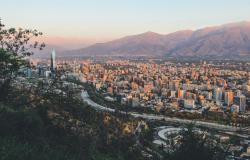
Mobility is a multifaceted concept with social, economic and political implications. This article reflects on the role of mobility and its relation to precarity in the emergence of protests in both Quito (Ecuador) and Santiago (Chile) in 2019 by examining the interplay between mobility and inequality. It argues that the announced increases in transport and fuel costs in Chile and Ecuador exposed obstacles to spatial and social mobility and existing inequalities. Although the protests arose in response to the announced reduction in fuel subsidies and possible increases in transport costs, we propose that they reflect a deeper issue, relating to the vulnerability of the livelihoods of significant segments of the population, despite the fact that both Quito and Santiago have seen improvements in several poverty and inequality indicators in recent years. We discuss how mobility and geography relate to patterns of structural marginalisation that are not necessarily evident from aggregate economic indicators, and how understanding inequality in terms of the ‘right to the city’ and access to public services explain the protests in both countries as a response to existing segregation and deep‐seated inequalities.
Policy Implications
- Policy makers must consider the multifaceted nature of spatial segregation if they wish to understand how access to transport and spatial mobility relate to mechanisms that produce and reproduce inequalities and exclusions in countries with high levels of social stratification.
- A uniform account of the presence or absence of social and economic rights within a given population is not available to policy makers. They should therefore be aware that their information and data are as fragmented as the experiences and accounts of precarity.
- Policy makers need to acknowledge that although poverty reduction is necessary, it is not sufficient as a way to tackle inequality and marginalisation. At best, poverty reduction amounts to palliative care. The assumption that poverty reduction equals inequality reduction can result in targeted social protection programmes of poverty reduction and income support based on a failure to understand the structures that create and perpetuate differences along lines of race, gender and class.
- Publicly funded and universally provided social policies (universalism) may be better vehicles for social equity and cohesion. By contrast, narrowly targeted policies and programmes may, in fact, be socially divisive and ineffective.
Photo by Alisha Lubben from Pexels